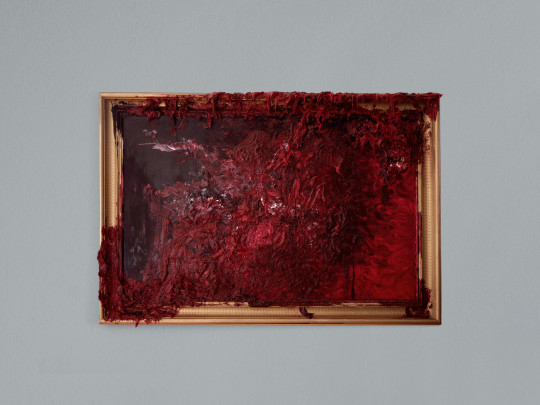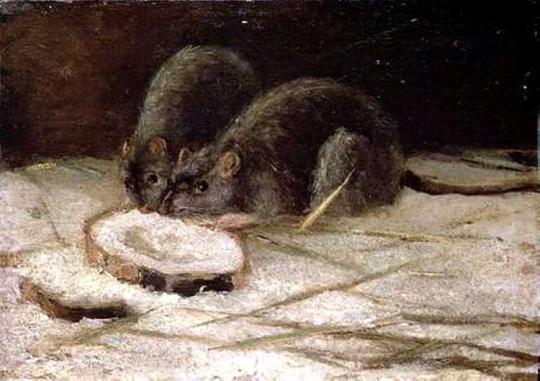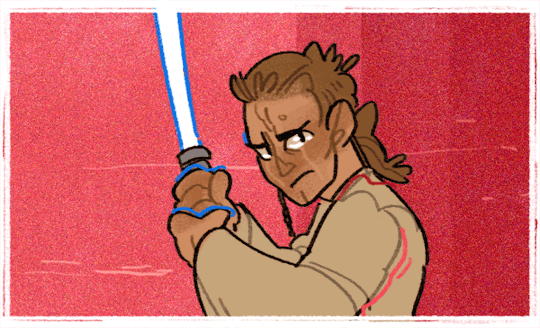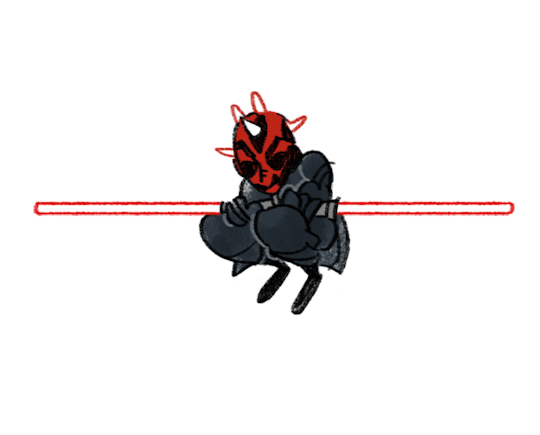Because we know places where no one will ever find you. Ece/Bat. A writer (not if I don't have an editor) and an artist (not if I don't have a drink)
Don't wanna be here? Send us removal request.
Photo

a stuffy collar and designing armour for my new bosmer who could probably crush your head
152 notes
·
View notes
Text
Untitled.

i made a comic in google slides for some ungodly reason
148K notes
·
View notes
Text
my ethically-sourced baby skull throne is coming along nicely
2K notes
·
View notes
Text

Hélène Cixous, from The Selected Plays of Hélène Cixous; “Black Sail, White Sail”
Text ID: There’ll be no hymns to our glory. / History has cut our throats.
6K notes
·
View notes
Photo





At the Gates of Dis (Oils) by Kim Jakobsson
This artist on Facebook // Instagram
50K notes
·
View notes
Text
jonathan “what do you expect me to do with this crucifix i’m not catholic” harker vs count “whoops look at the sky! the sun is going up so i will now leave for an amount of time that just so happens to be all of the daylight hours” dracula
590 notes
·
View notes
Text
When modern media wants a group of baddies to look badass, it’ll often borrow design elements from Nazi uniforms. It’s not hard to understand why; the Nazis famously had their uniforms designed by professional fashion designers, including runway mogul Hugo Boss, and it worked wonderfully in terms of giving Nazi troops a stylish and intimidating public image.
What’s less well known, however, is how ridiculously terrible those uniforms were for any purpose other than looking smart.
Let me give you an example: suspenders. Back in the 1930s, the modern tactical harness hadn’t yet been developed. Instead, soldiers would wear a sturdy pair of leather suspenders in order to help distribute the weight of their ammo belts (which could be substantial - bullets aren’t light!). Hitler didn’t care for that - he thought it would make his troops look like farmers. Instead, he commissioned his uniform designers to come up with a complicated system of internal suspenders that could be worn under the uniform jacket, with metal hooks projecting from special holes near the jacket’s waistline. The idea was that the ammo belt would rest on the hooks, thus allowing it to be supported without disrupting the jacket’s clean lines.
The problem? The system’s designers, being accustomed to crafting for the runway, had completely overlooked that soldiers sometimes need to move quickly. At any pace quicker than a brisk walk, the ammo belt would bounce off of the hooks and slide down the wearer’s torso, often tripping him in the process. Worse, news of the issue didn’t filter back to the high command until the uniforms had already been widely distributed, so it was impossible to fix in an economical fashion. The Nazi troops eventually resorted to wearing external suspenders over the internal suspenders in order to keep their ammo belts in place, thus entirely defeating the purpose.
Then there are the cold-weather jackets, made infamous by the Nazis’ disastrous Winter Campaign against Russia in 1941-1942. At the time, the standard cold-weather jacket in use by most armies consisted of heavy quilted fabric stuffed with torn-up cotton. Hitler didn’t like that at all; in his opinion, it made it look like his troops were wearing blankets. So he had each soldier issued an individually tailored winter jacket made of suit-grade fabric and lined with fur (sourced from civilian clothing seized from death camp inmates, because of course it was).
You can probably guess where this is going. Predictably to anyone who’s not a Nazi fashion designer, the fine fabric of the jackets wasn’t tightly woven enough to stop the wind. The fur, meanwhile, harboured lice and fleas, stank abominably when wet, and was impossible to launder in the field. They’d managed to issue their troops dry clean only winter apparel, in a campaign that would send them far from their supply lines. That the weather ended up killing more Nazis than the Russian army should thus come as no surprise.
And these aren’t outliers. Virtually every element of the Nazi uniform made up for its smart styling by being ridiculously impractical. The officers often had it worst of all; their uniforms were expertly tailored to make their builds look trim and powerful, at the cost of being stuffy, uncomfortable, and difficult to move around it. Indeed, some officers’ uniforms were so smartly tailored that they couldn’t sit down without taking their pants off. Yeah, let that image roll around in your head for a moment or two.
The upshot is that whenever I see baddies in a movie or a TV show with clearly Nazi-inspired uniforms, my first thought is less “whoa, badass!” and more “these men are about to be murdered by their own trousers”.
98K notes
·
View notes
Text
I am so tired of seeing supernatural fandom argue on my dash. Please let it die and bury it already <3
3 notes
·
View notes
Text
i gotta write a trope break where the dad’s favorite daughter gets a bf and instead of being suspicious the dad is like ‘YES. FINALLY. I HAVE A SON TO GO FISHING WITH’ ‘dad i go fishing with you every week’ ‘i know and i’ll always enjoy fishing with you more but I WANNA MAKE HIM FEEL WELCOME. COME ON SON LET US FISH’
109K notes
·
View notes
Text
“starry night” this, “café terrace at night” that, when are we going to talk about “two rats” by vincent van gogh?

169K notes
·
View notes
Text
A handy list of poisons for writing reference, provided to you by me, Bella
Poisoning is one of the oldest murder tactics in the books. It was the old equalizer, and while it’s often associated with women, historically men are no less likely to poison you. This is not a guide on how to poison people, you banana bunches, it’s a guide on writing about poisons in fiction so you don’t end up on a watch list while researching them. I’ve taken that hit for you. You’re welcome. These are just a few of the more classic ones.
Hemlock: Hemlock (conium maculatum) is one of the more famous ones, used in ancient times most notably in Socrates’ forced suicide execution. So it goes. The plant has bunches of small, white flowers, and can grow up to ten feet tall. It’s a rather panicky way to die, although it wouldn’t show: hemlock is a paralytic, so the cause of death is most often asphyxiation due to respiratory paralysis, although the mind remains unaffected and aware.
Belladonna: Atropa belladonna is also called deadly nightshade. It has pretty, trumpet-shaped purple flowers and dark, shiny berries that actually look really delicious which is ironic since it’s the most toxic part of the plant. The entire plant is poisonous, mind you, but the berries are the most. One of the most potent poisons in its hemisphere, it was used as a beauty treatment, so the story says, and rubbed into the eyes to make the eyes dilate and the cheeks flush. Hench the name beautiful lady. The death is more lethargic than hemlock, although its symptoms are worse: dilated pupils, sensitivity to light, blurred vision, tachycardia, loss of balance, staggering, headache, rash, flushing, severely dry mouth and throat, slurred speech, urinary retention, constipation, confusion, hallucinations, delirium, and convulsions. It’s toxic to animals, but cattle and rabbits can eat it just fine, for some reason.
Arsenic: Arsenic comes from a metalloid and not a plant, unlike the others here, but it’s easily the most famous and is still used today. Instead of being distilled from a plant, chunks of arsenic are dug up or mined. It was once used as a treatment for STDs, and also for pest control and blacksmithing, which was how many poisoners got access to it. It was popular in the middle ages because it looked like a cholera death, due to acute symptoms including stomach cramps, diarrhea, confusion, convulsions, vomiting, and death. Slow poisoning looked more like a heart attack. The Italians famously claimed that a little arsenic improved the taste of wine.
Strychnine: Strychnine (strick-nine) is made from the seed of strychnos nux vomica and causes poisoning which results in muscular convulsions and eventually death through asphyxia. Convulsions appear after inhalation or injection—very quickly, within minutes—and take somewhat longer to manifest after ingestion, around approximately 15 minutes. With a very high dose, brain death can occur in 15 to 30 minutes. If a lower dose is ingested, other symptoms begin to develop, including seizures, cramping, stiffness, hypervigilance, and agitation. Seizures caused by strychnine poisoning can start as early as 15 minutes after exposure and last 12 – 24 hours. They are often triggered by sights, sounds, or touch and can cause other adverse symptoms, including overheating, kidney failure, metabolic and respiratory acidosis. During seizures, abnormal dilation, protrusion of the eyes, and involuntary eye movements may occur. It is also slightly hallucinogenic and is sometimes used to cut narcotics. It also notably has no antidote. In low doses, some use it as a performance enhancer.
Curare: Chondrodendron tomentosum is lesser known than its famous cousins, but kills in a very similar way to hemlock. It is slow and terrible, as the victim is aware and the heart may beat for many minutes after the rest of the body is paralyzed. If artificial respiration is given until the poison subsides, the victim will survive.
Wolfsbane: Aconitum has several names; Monkshood, aconite, Queen of Poisons, women’s bane, devil’s helmet) and is a pretty, purple plant with gourd-shaped flowers. The root is the most potent for distillation. Marked symptoms may appear almost immediately, usually not later than one hour, and with large doses death is near instantaneous. Death usually occurs within two to six hours in fatal poisoning. The initial signs are gastrointestinal including nausea, vomiting, and diarrhea. This is followed by a sensation of burning, tingling, and numbness in the mouth and face, and of burning in the abdomen. In severe poisonings pronounced motor weakness occurs and sensations of tingling and numbness spread to the limbs. The plant should be handled with gloves, as the poison can seep into the skin.
Foxglove: Digitalis is large with trumpet-shaped flowers that can be many colors, but usually a pinkish shade. It may have from the term foxes-glew, which translated to fairy music. Intoxication causes nausea, vomiting and diarrhea, as well as sometimes resulting in xanthopsia (jaundiced or yellow vision) and the appearance of blurred outlines (halos), drooling, abnormal heart rate, cardiac arrhythmias, weakness, collapse, dilated pupils, tremors, seizures, and even death. Slowed heartbeat also occurs. Because a frequent side effect of digitalis is reduction of appetite and the mortality rate is low, some individuals have used the drug as a weight-loss aid. It looks a bit like comfrey, which is an aid for inflammation. Make sure not to confuse the two.
26K notes
·
View notes











